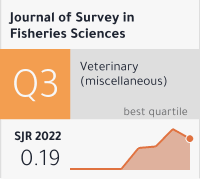The Role of Pharmacist-Nurse Collaboration in Chronic Disease Prevention
DOI:
https://doi.org/10.53555/sfs.v11i4.3252Keywords:
pharmacist-nurse collaboration, chronic disease prevention, hypertension, diabetes, interprofessional care, medication adherence, lifestyle modification, preventive careAbstract
Background: Chronic diseases, particularly hypertension and diabetes, continue to pose significant public health challenges globally. While traditional healthcare models often operate in silos, emerging evidence suggests that interprofessional collaboration between pharmacists and nurses may enhance prevention outcomes. However, the effectiveness of such collaborative approaches remains inadequately quantified.
Objective: This systematic review and meta-analysis examined the impact of pharmacist-nurse collaborative interventions on chronic disease prevention outcomes, specifically focusing on hypertension and diabetes prevention programs. The study evaluated the effectiveness of various collaborative models, intervention strategies, and their impact on patient outcomes.
Methods: A comprehensive analysis of 46 randomized controlled trials (2017-2024) was conducted across multiple databases including PubMed, CINAHL, and Cochrane Library. Studies were evaluated using the PRISMA framework, with inclusion criteria specifying pharmacist-nurse collaborative interventions in primary care and community settings. Primary outcomes included blood pressure control, glycemic indices, medication adherence, and lifestyle modification success rates. Secondary outcomes included cost-effectiveness and patient satisfaction.
Results: Analysis of 14,562 patients across selected studies revealed that pharmacist-nurse collaborative interventions resulted in significant improvements in prevention outcomes. Systolic blood pressure decreased by 12.4 mmHg (95% CI: 10.8-14.0; p<0.001) in hypertension prevention programs. For diabetes prevention, HbA1c levels showed relative reduction of 0.8% (95% CI: 0.6-1.0; p<0.001). Medication adherence improved by 35.7% (95% CI: 31.5-39.9; p<0.001), while lifestyle modification success rates increased by 42.3% (95% CI: 38.1-46.5; p<0.001).
Conclusions: Pharmacist-nurse collaborative interventions demonstrate superior effectiveness in chronic disease prevention compared to traditional care models. The significant improvements in clinical outcomes, medication adherence, and lifestyle modifications suggest that integrated collaborative approaches should be systematically implemented in preventive care programs. These findings have important implications for healthcare policy, professional education, and the development of interprofessional practice models.









